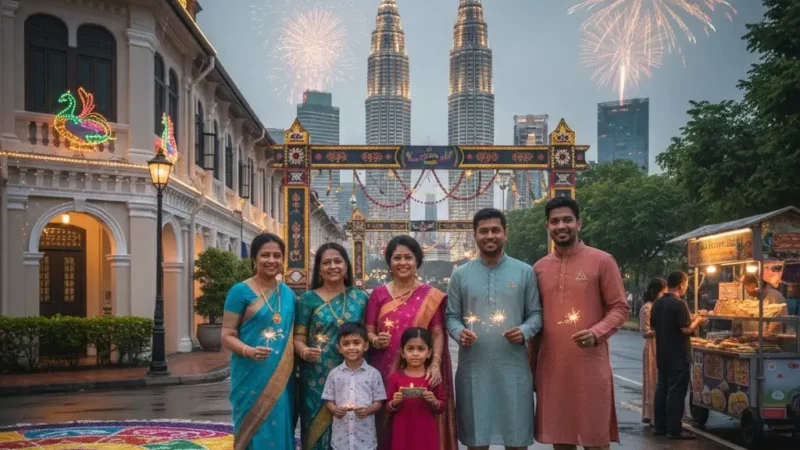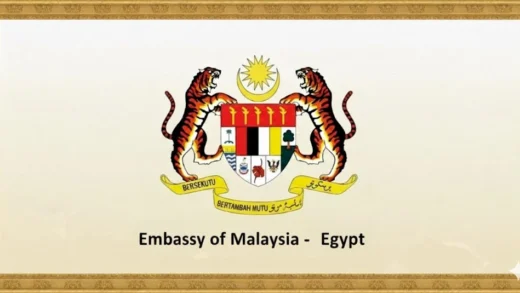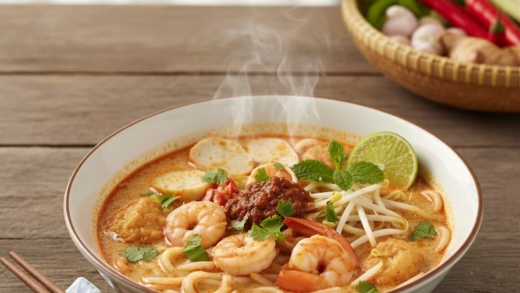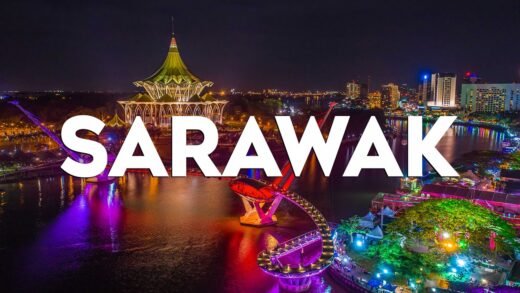Deepavali Travel Guide- Celebrating the Festival Across Malaysia

Introduction: Experience the Festival of Lights in Malaysia
Deepavali, or Diwali, is one of Malaysia’s most enchanting and culturally rich celebrations. Known as the Festival of Lights, it marks the triumph of good over evil and light over darkness. Every year, millions of Malaysian Indians celebrate Deepavali with prayers, family gatherings, festive foods, and beautiful decorations.
For travelers, this is the perfect time to explore Malaysia’s multicultural essence — from the grand temple ceremonies at Batu Caves in Kuala Lumpur to the colorful street festivals in Penang and Johor Bahru. This Deepavali travel guide explores everything you need to know — the origins of Deepavali in Malaysia, customs, regional highlights, and where to celebrate the festival nationwide.
The Origins of Deepavali in Malaysia
A Historical Glimpse
Deepavali in Malaysia has its roots in the Indian diaspora who arrived during the British colonial era. These immigrants brought their faith and traditions, establishing temples and communities that kept their culture alive. Over the decades, Deepavali evolved into both a religious and cultural event — an official public holiday celebrated throughout the nation.
Today, Malaysian Deepavali history and culture blend traditional Hindu practices with local Malaysian customs, symbolizing unity in diversity.
Significance of Deepavali for Malaysian Indians
For the Indian community in Malaysia, Deepavali is more than just a celebration — it’s a time for spiritual renewal, forgiveness, and family unity. Homes are cleaned, new clothes are worn, lamps are lit, and prayers are offered to Goddess Lakshmi, the goddess of prosperity.
The lighting of oil lamps, or vilakku, represents the removal of ignorance and the welcoming of wisdom and good fortune.
Traditional Deepavali Customs and Rituals in Malaysia
Morning Rituals and Temple Visits
The day begins before dawn with an oil bath, believed to cleanse the soul. Families then visit temples like Sri Mahamariamman Temple in Kuala Lumpur or local neighborhood shrines to offer prayers and seek blessings. Devotees light lamps, chant mantras, and present offerings of fruits and sweets.
Home Decorations and Rangoli Art
Homes are decorated with kolam (also known as rangoli) — intricate designs made from colored rice or flower petals at the entrance to welcome prosperity. Oil lamps and fairy lights illuminate homes and streets, symbolizing the essence of Deepavali traditions in Malaysia.
Festive Clothing and Family Gatherings
Bright sarees, kurtas, and traditional attire dominate the celebration. Families exchange gifts and sweets, strengthening the sense of community and togetherness.
Regional Deepavali Celebrations Across Malaysia
1. Kuala Lumpur: The Heart of Celebration
Kuala Lumpur is the epicenter of Malaysian Indian festival celebrations.
- Batu Caves becomes the most visited site during Deepavali, where devotees climb the 272 steps to offer prayers to Lord Murugan.
- Brickfields (Little India) bursts with color — featuring lanterns, flower garlands, music, and bustling Deepavali bazaars.
- Visitors can experience open houses hosted by local families and community centers.
2. Penang: A Blend of Heritage and Festivity
Penang’s George Town transforms into a cultural hotspot during Deepavali. Expect traditional Indian dance performances, temple ceremonies, and food fairs. The streets glow with lights, while Hindu temples host special prayer sessions and vegetarian feasts.
3. Johor Bahru: Markets and Community Spirit
In Johor Bahru, Deepavali takes on a more community-oriented feel. Areas like Kampung Wadi Hana host colorful markets selling sweets, clothes, and festive decor. Sri Raja Mariamman Temple also holds grand prayers, attracting worshippers from all walks of life.
4. Ipoh: A Homely Celebration
Ipoh’s Indian community celebrates with vibrant yet intimate gatherings. Temples like Sri Subramaniar Temple hold morning rituals, followed by open houses serving home-cooked Indian meals. The local streets are filled with the scent of jasmine garlands and the sparkle of oil lamps.
Temples that Define Deepavali in Malaysia
Batu Caves, Selangor
A world-renowned Hindu temple complex dedicated to Lord Murugan, Batu Caves is a must-visit during Deepavali. The caves are illuminated, and the atmosphere is filled with devotional songs, incense, and prayers.
Sri Mahamariamman Temple, Kuala Lumpur
As the oldest Hindu temple in Kuala Lumpur, Sri Mahamariamman Temple showcases stunning Dravidian architecture. During Deepavali, it becomes a spiritual hub filled with floral decorations, chanting, and offerings.
Traditional Foods and Sweets During Deepavali
Food is at the heart of every Deepavali celebration in Malaysia.
Here are some must-try delicacies:
- Murukku – Crispy spiral snacks made from rice and urad dal flour.
- Laddu and Mysore Pak – Classic Indian sweets symbolizing prosperity.
- Kesari and Payasam – Sweet semolina pudding and creamy rice dessert.
- Vegetarian curries – Many families prepare South Indian-style dishes like sambar, rasam, and vegetable biryani.
Local Malaysian touches include adding pandan, coconut milk, or palm sugar — giving a unique twist to these traditional favorites.
Decorations and Festive Ambiance
Every corner of Malaysia comes alive with vibrant Deepavali lights and decorations. Streets, homes, and shopping malls shimmer with fairy lights, diyas, and colorful kolams. Many cities also host Deepavali bazaars selling clothes, jewelry, and festive décor — ideal for visitors who want to take a piece of the celebration home.
Travel Tips: How to Experience Deepavali in Malaysia
- Visit Temples Early: Morning prayers are most sacred and less crowded.
- Join Open Houses: Many Indian Malaysians open their homes to guests — a wonderful way to experience local hospitality.
- Dress Modestly: Wear traditional attire or modest clothing when visiting temples.
- Sample Local Cuisine: Try Deepavali sweets at night markets and Indian restaurants.
- Respect Rituals: Avoid interrupting prayers and ask permission before taking photos.
Conclusion: A Festival That Unites Light and Culture
Deepavali in Malaysia is more than a festival — it’s a living expression of cultural diversity, faith, and joy. Whether you’re watching temple rituals at Batu Caves, tasting murukku in Penang, or strolling through Little India in Kuala Lumpur, every moment reveals the spirit of Malaysian Deepavali history and culture.
For travelers, this is the perfect time to witness how Malaysia harmoniously celebrates light, love, and unity across its multicultural landscape.





Comments are closed.